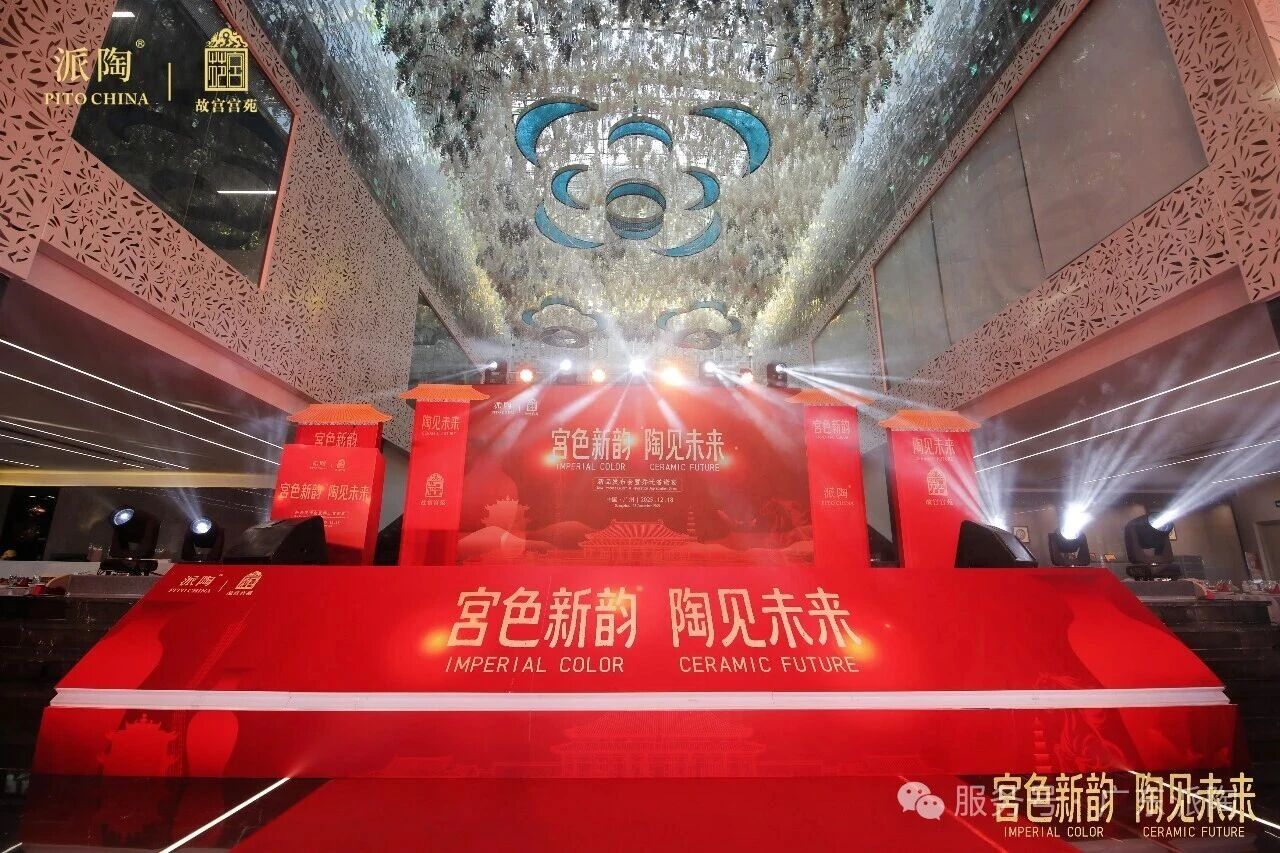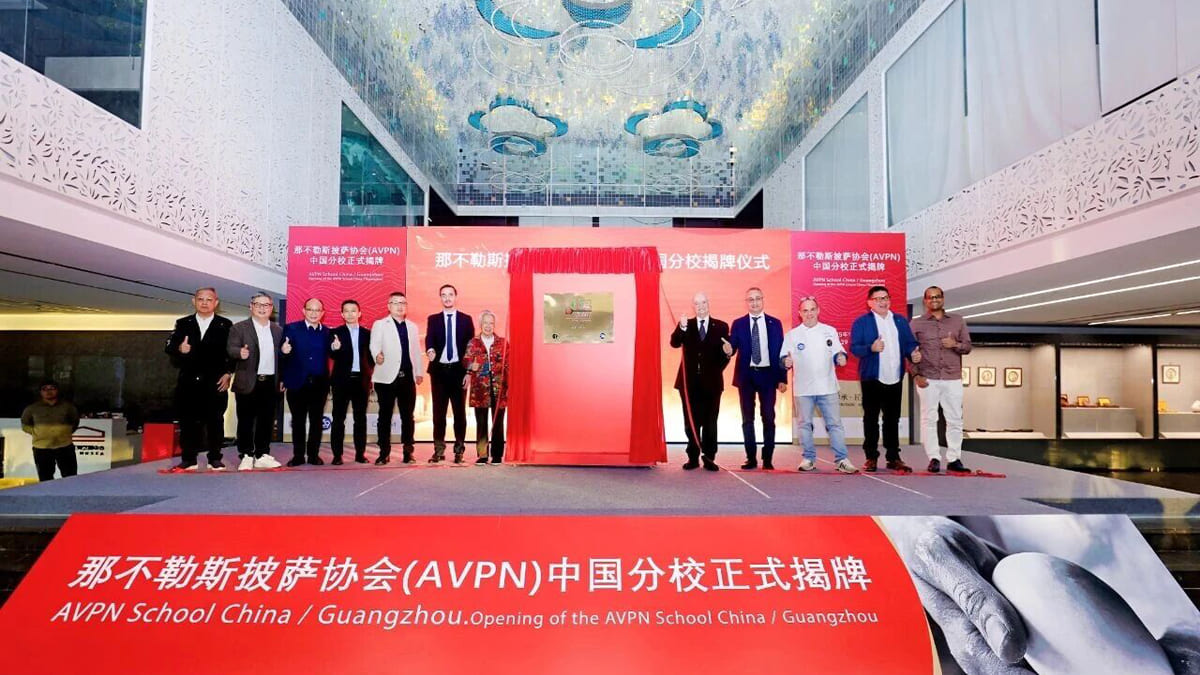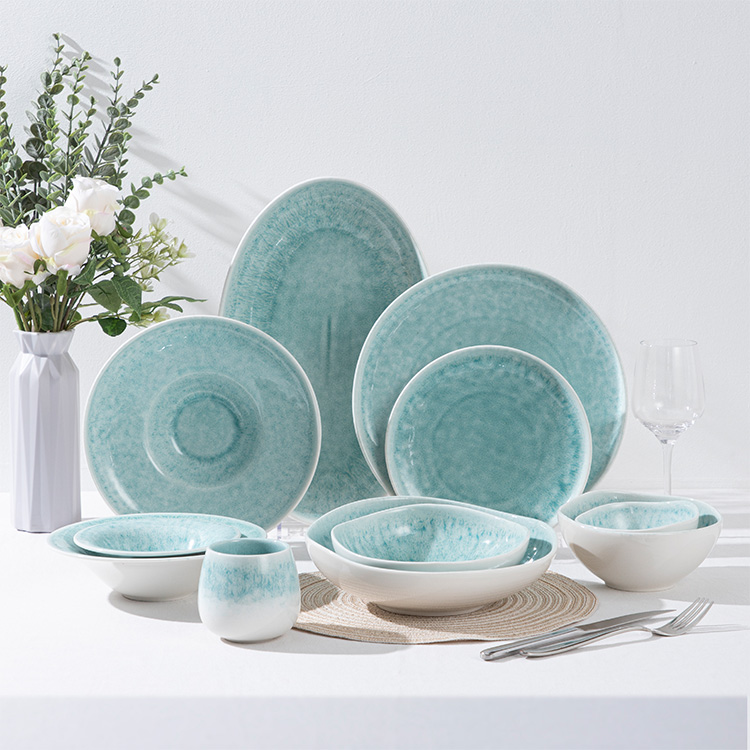
When it comes to creating an exceptional dining experience in restaurants and hotels, every detail matters. From the ingredients used in the dishes to the ambiance of the establishment, each element contributes to the overall impression left on the customers. In this article, we will explore the many advantages and versatility of using porcelain dinnerware in such settings. With its elegance, durability, and easy maintenance, porcelain dinnerware has become the preferred choice for chefs, restaurateurs, and hoteliers around the world. Let us delve deeper into the world of porcelain dinnerware and discover why it is considered the ideal choice for the hospitality industry.
What is Porcelain Dinnerware

Porcelain dinnerware refers to a type of dinnerware made from a specific type of ceramic known as porcelain. It is highly valued for its durability, elegance, and versatility.
Porcelain is made from a mixture of clay and other materials, which is then fired at high temperatures to create a hard and non-porous material. This makes porcelain dinnerware resistant to chipping, scratching, and staining, making it suitable for everyday use or special occasions. It is known for its delicate appearance, translucent quality, and smooth glaze that adds a touch of refinement to any table setting.
The Advantages of Using Porcelain Dinnerware
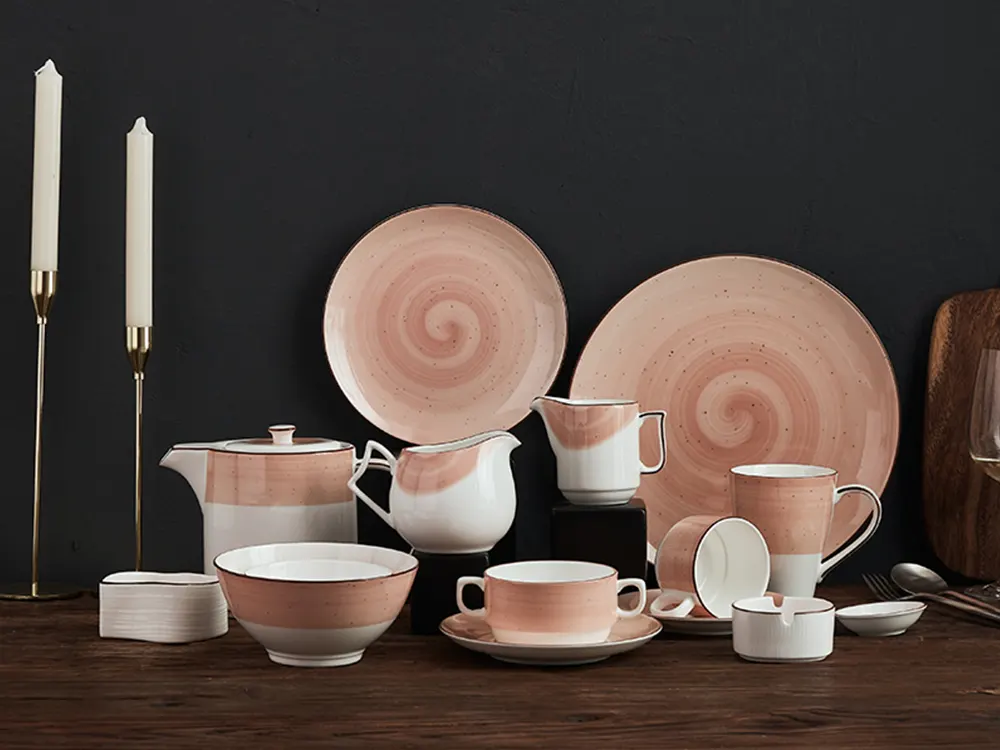
A. Elegance and Sophistication
Porcelain dinnerware exudes an air of elegance and sophistication that is hard to replicate with other materials. Its smooth and polished surface, often adorned with intricate patterns or simple designs, adds a touch of refinement to any dining experience. The luxurious feel of porcelain dinnerware enhances the overall ambiance of restaurants and hotels, instantly elevating the perception of quality and service. Whether it is an upscale fine dining establishment or a trendy café, porcelain dinnerware never fails to make a lasting impression on guests.
B. Durability and Longevity
Porcelain Dinnerware Durability
One of the primary advantages of using porcelain dinnerware in the hospitality industry is its exceptional durability. Unlike glass or ceramic dinnerware, porcelain is less prone to chipping or breaking, even when subjected to regular use and commercial dishwashing. This durability ensures that the dinnerware can withstand the rigorous demands of a fast-paced restaurant or hotel environment without compromising its quality and appearance.
Stoneware vs Porcelain Dinnerware Durability
When comparing stoneware and porcelain dinnerware in terms of durability, porcelain emerges as the winner. While stoneware is known for its strength and durability, porcelain surpasses it due to its denser composition and higher firing temperature. Porcelain dinnerware is less susceptible to cracks or scratches, making it a more reliable choice for long-term use in restaurants and hotels.
Porcelain vs Bone China Durability
Bone china, another type of fine dinnerware, is often compared to porcelain in terms of durability. While both materials are elegant and suitable for formal dining, porcelain has the edge when it comes to durability. Porcelain dinnerware is less likely to chip or stain compared to bone china dinnerware, ensuring that it remains in pristine condition even after countless uses in busy hospitality establishments.
C. Heat and Cold Resistance
Porcelain dinnerware’s ability to retain heat makes it an excellent choice for serving hot dishes. Whether it is steaming soup, sizzling stir-fries, or delectable desserts, porcelain dinnerware keeps the food warm for longer periods, enhancing the dining experience. Similarly, its heat resistance allows for easy transfer between the oven and table, ensuring that the dishes arrive hot and visually appealing to the customers.
On the other hand, porcelain dinnerware also exhibits excellent cold resistance. This makes it suitable for serving chilled dishes like salads or desserts, as it helps to keep them fresh and cool. The ability to withstand extreme temperatures without compromising its integrity is a testament to the quality and versatility of porcelain dinnerware.
D. Chip and Scratch Resistance
In the fast-paced environment of restaurants and hotels, accidents are bound to happen. However, with porcelain dinnerware, the risk of chips and scratches is significantly minimized. Due to its non-porous nature and dense composition, porcelain is more resistant to the everyday wear and tear that comes with frequent handling and washing. This durability ensures that the dinnerware maintains its aesthetic appeal, free from unsightly scratches or blemishes.
E. Stain and Odor Resistance
Porcelain dinnerware’s non-porous surface makes it highly resistant to both staining and retaining odors. This is particularly advantageous in a restaurant or hotel setting where different types of cuisine are served. Whether it is colorful sauces, rich gravies, or aromatic spices, porcelain dinnerware can be easily cleaned without leaving behind any traces of stains or lingering odors. This ensures that each dish is presented in its truest form, allowing the flavors to shine through without any unwanted influences.
F. Easy to Clean and Maintain
One of the practical advantages of using porcelain dinnerware in restaurants and hotels is its ease of cleaning and maintenance. Porcelain’s non-stick surface prevents food from adhering to the dinnerware, making it effortless to clean. A simple rinse or a quick wash with mild detergent is often sufficient to remove any residue, ensuring that the dinnerware is ready for its next use. Additionally, porcelain’s resistance to scratches and stains reduces the need for frequent replacement, making it a cost-effective choice for hospitality establishments.
Versatility of Porcelain Dinnerware
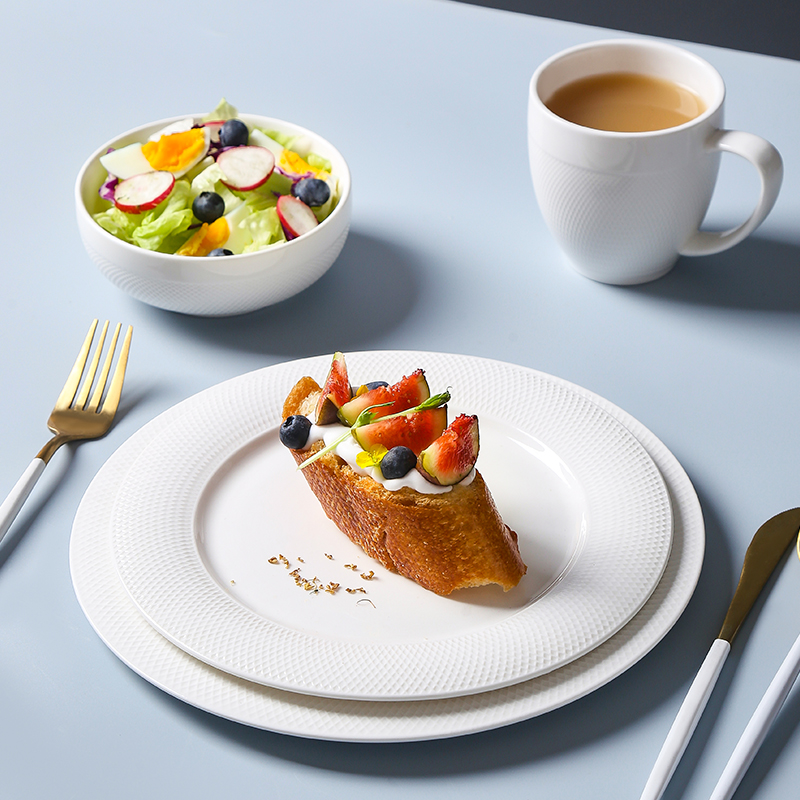
A. Suitable for Various Culinary Styles
Porcelain dinnerware’s versatility is one of its greatest assets. It can effortlessly adapt to different culinary styles, ranging from traditional to contemporary, and from Asian to Western. Whether it is an elegant fine dining restaurant serving haute cuisine or a trendy café offering fusion dishes, porcelain dinnerware seamlessly complements the aesthetics and presentation of the food. Its clean and timeless design provides a blank canvas for chefs to showcase their culinary creations.
B. Enhances Food Presentation
The presentation of food plays a crucial role in the hospitality industry. Porcelain dinnerware’s pure white canvas allows the colors, textures, and arrangement of the dishes to take center stage. The clarity of hues and the vibrant colors of fresh produce are accentuated against the pristine white background of porcelain. Chefs can take advantage of this visual contrast to create visually stunning plates, where every component stands out, showcasing their creativity and attention to detail.
C. Perfect for Formal and Casual Dining
Porcelain dinnerware effortlessly transitions between formal and casual dining settings. Its refined elegance and sophisticated appeal make it the perfect choice for upscale fine dining establishments, where elegance and style are paramount. Alternatively, porcelain dinnerware can also add a touch of class and elegance to casual restaurants and cafes. Its timeless design and versatility allow it to adapt to any ambience, ensuring that the dining experience is elevated, regardless of the establishment’s style.
D. Versatile Design Options
Porcelain dinnerware offers endless design possibilities, ranging from classic to contemporary, and from minimalist to ornate. For those who prefer a timeless and traditional look, classic round and square shapes are available. These simple and clean designs can be embellished with subtle patterns or textures to add a touch of sophistication. On the other hand, for those who seek a bold and artistic touch, unique and unconventional shapes are also available. Restaurants and hotels have the freedom to choose from a wide range of designs that perfectly align with their brand identity and desired atmosphere.
Porcelain Dinnerware Shapes and Patterns
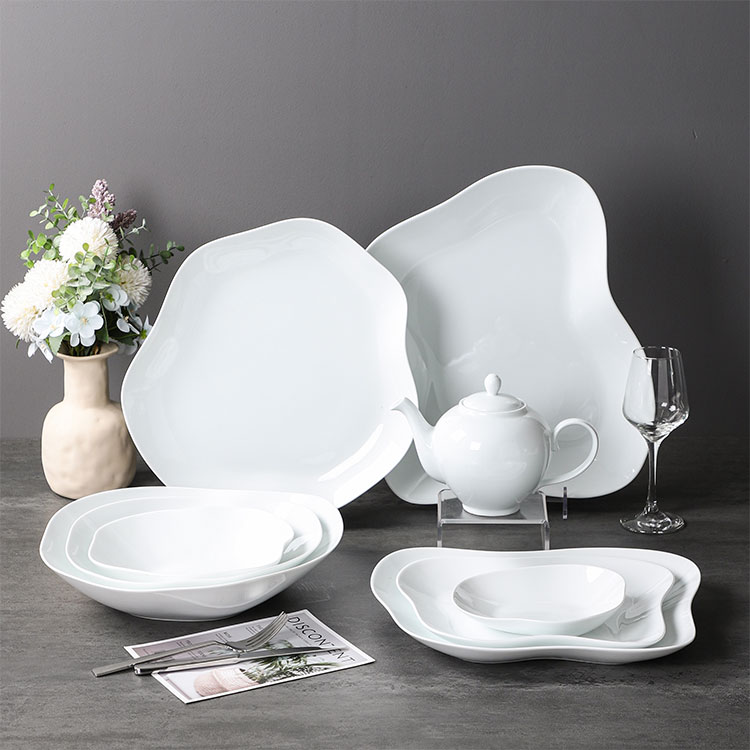
A. Classic Round and Square Shapes
Classic round and square shapes are the backbone of porcelain dinnerware design. These timeless silhouettes are characterized by their symmetry and simplicity, making them suitable for a wide range of culinary styles and dining formats. The rounded edges of classic round plates create a harmonious and balanced appearance, while the angular edges of square plates convey a sense of modernity and minimalism. The classic shapes of porcelain dinnerware allow the food to take center stage, ensuring a visually pleasing presentation.
B. Unique and Artistic Shapes
For those establishments seeking to make a statement with their tableware, unique and artistic shapes of porcelain dinnerware are an excellent choice. These unconventional designs push the boundaries of traditional tableware, adding a touch of avant-garde elegance to the dining experience. From asymmetric plates to sculptural bowls, these artistic pieces create an unforgettable impression on guests, while still maintaining the functionality and quality expected of porcelain dinnerware.
C. Traditional and Modern Patterns
Patterns have always been an integral part of porcelain dinnerware design. From traditional floral motifs to modern geometric designs, patterns add depth and character to the tabletop. Traditional patterns, often inspired by nature and heritage, evoke a sense of nostalgia and elegance. On the other hand, modern patterns featuring bold colors and abstract shapes reflect the contemporary dining scene and cater to those establishments seeking a more vibrant and distinct look.
D. Customizable Options
Many reputable dinnerware manufacturers and suppliers offer customizable options for porcelain dinnerware. This allows restaurants and hotels to create their unique signature designs that perfectly align with their brand identity and aesthetic vision. Whether it is adding custom logos, monograms, or unique patterns, the ability to personalize porcelain dinnerware adds an extra layer of exclusivity and sophistication to the dining experience, setting the establishment apart from the competition.
Size and Capacity Options
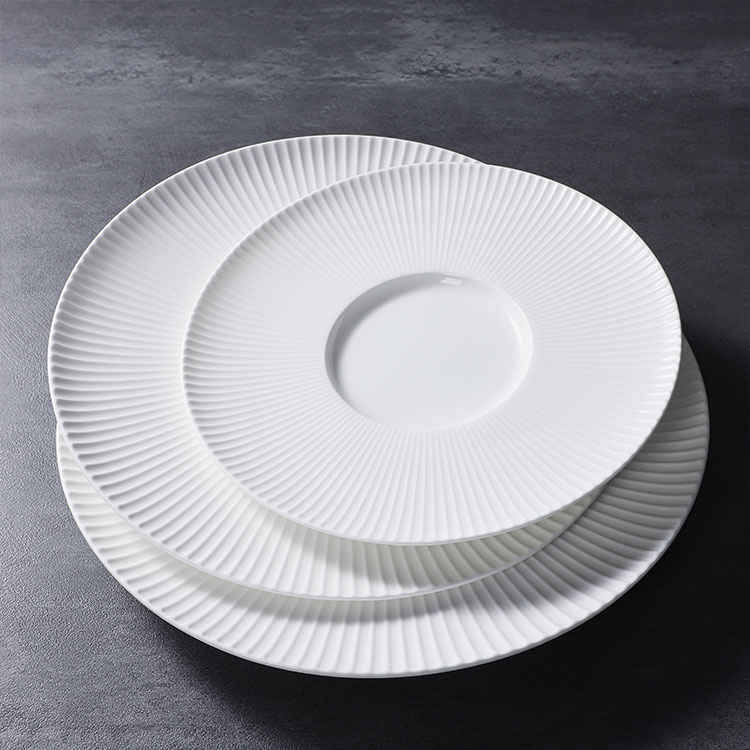
A. Range of Plate Sizes
Porcelain dinnerware comes in a wide range of plate sizes to accommodate different culinary presentations. From dainty appetizer plates to spacious main course plates, establishments can choose the sizes that best suit their menu offerings and portion sizes. This flexibility allows chefs to create visually appealing plates where every element finds its rightful place, without overcrowding or overshadowing the other components.
B. Bowl and Platter Options
In addition to plates, porcelain dinnerware also includes a variety of bowl and platter options. Bowls come in different sizes and depths, suitable for serving anything from soups and salads to pasta and desserts. Platters, on the other hand, provide a grand stage for sharing dishes or elegant presentations. The versatility of bowl and platter options ensures that every dish is served in the most appropriate and visually appealing manner.
C. Teacup and Saucer Sizes
Porcelain dinnerware also encompasses teacups and saucers, which are essential for hotels and restaurants serving hot beverages. Teacup sizes can vary, allowing establishments to offer anything from a delicate and petite cup to a larger and more generous size. The accompanying saucers not only add a touch of refinement but also provide practicality by catching any spills and keeping the table clean.
Porcelain Dinnerware for Specific Uses
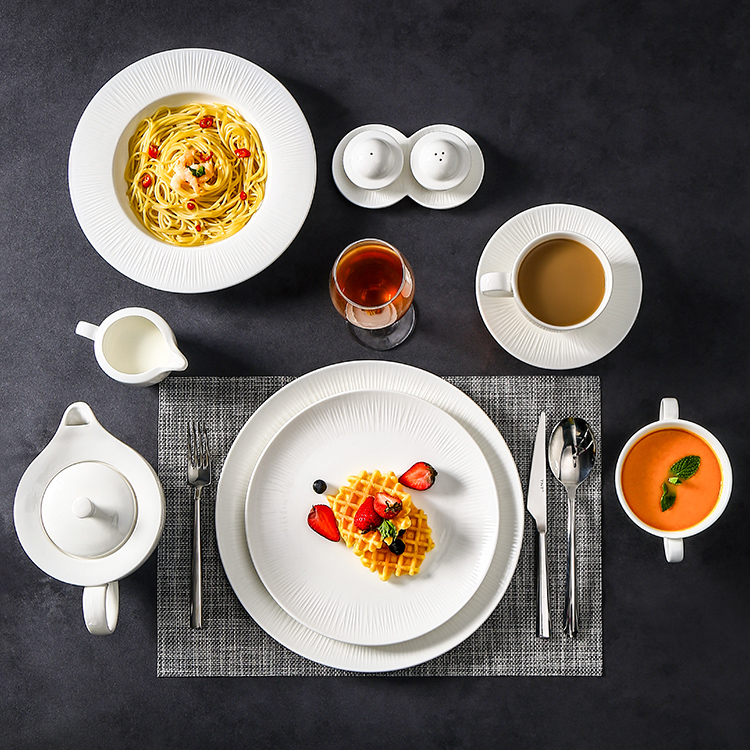
A. Banquet and Event Settings
Banquets and events require tableware that can withstand large-scale use without compromising on quality. Porcelain dinnerware is an excellent choice for such occasions as it is designed to withstand the demands of catering to a large number of guests. Its durability ensures that it can be reused multiple times without losing its visual appeal, making it a cost-effective option for event planners and venues.
B. Fine Dining Establishments
Fine dining establishments demand the highest level of quality and refinement in their tableware. Porcelain dinnerware is the preferred choice in such settings due to its elegance, durability, and ability to enhance the presentation of gourmet dishes. The timeless beauty of porcelain perfectly complements the meticulous preparation and artistic plating of high-end cuisine.
C. Casual Restaurants and Cafes
Casual restaurants and cafes can also benefit from using porcelain dinnerware to enhance their overall dining experience. Porcelain’s versatility allows it to seamlessly fit into any ambiance, creating an upscale feel without compromising on comfort or approachability. Its durability ensures that it withstands the rigors of high-volume service, making it the go-to choice for casual dining establishments.
D. Hotels and Resorts
Hotels and resorts also rely on porcelain dinnerware to elevate their dining offerings. From fine dining restaurants within the establishment to room service and banquets, porcelain dinnerware provides a touch of elegance and sophistication. It ensures that every meal experience is memorable, whether it is a luxurious dinner in a high-end restaurant or a casual breakfast in the comfort of a guest’s room.
Factors to Consider When Choosing Porcelain Dinnerware
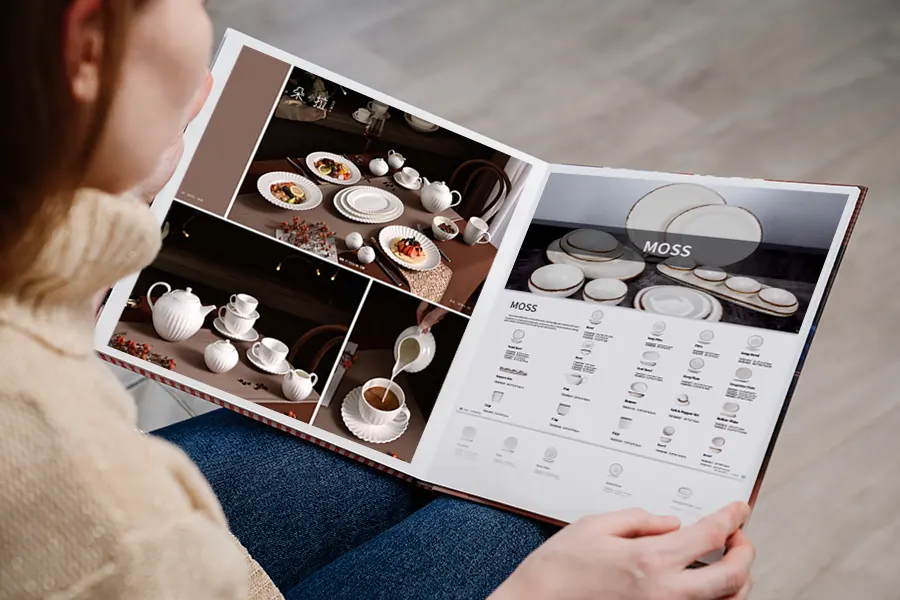
A. Budget and Cost Effectiveness
When choosing porcelain dinnerware for restaurants and hotels, it is crucial to consider the budget and cost-effectiveness of the investment. While porcelain dinnerware may have a higher initial cost compared to other materials, its durability and longevity make it a cost-effective choice in the long run. Unlike cheaper alternatives that may require frequent replacements due to breakage or wear over time, porcelain dinnerware can withstand the demands of a busy hospitality establishment, ensuring longevity and reducing overall expenses.
B. Matching Existing Decor and Branding
Porcelain dinnerware contributes to the overall aesthetic and branding of a restaurant or hotel. It is essential to choose dinnerware that complements the existing decor and aligns with the establishment’s branding. Whether it is a modern and minimalist theme or a traditional and elegant concept, the right selection of porcelain dinnerware can enhance the desired atmosphere and create a harmonious dining experience.
C. Dishwasher and Microwave Safety
In a commercial setting, the ability to clean and sanitize tableware efficiently is of utmost importance. When selecting porcelain dinnerware, it is essential to ensure that it is dishwasher safe. This guarantees that the dinnerware can withstand frequent commercial dishwashing without losing its quality or appearance. Additionally, if the establishment plans to use the dinnerware in microwave ovens, it is crucial to choose options that are microwave safe to prevent any damage or safety hazards.
D. Weight and Handling Comfort
The weight and ergonomics of porcelain dinnerware are essential considerations, especially in a fast-paced restaurant environment. While porcelain dinnerware’s durability is undoubtedly an advantage, it should not compromise the comfort and ease of handling. Lighter-weight options that still possess the desired durability and quality can significantly enhance the efficiency and comfort of the serving staff, minimizing the risk of accidents and fatigue.
Conclusion
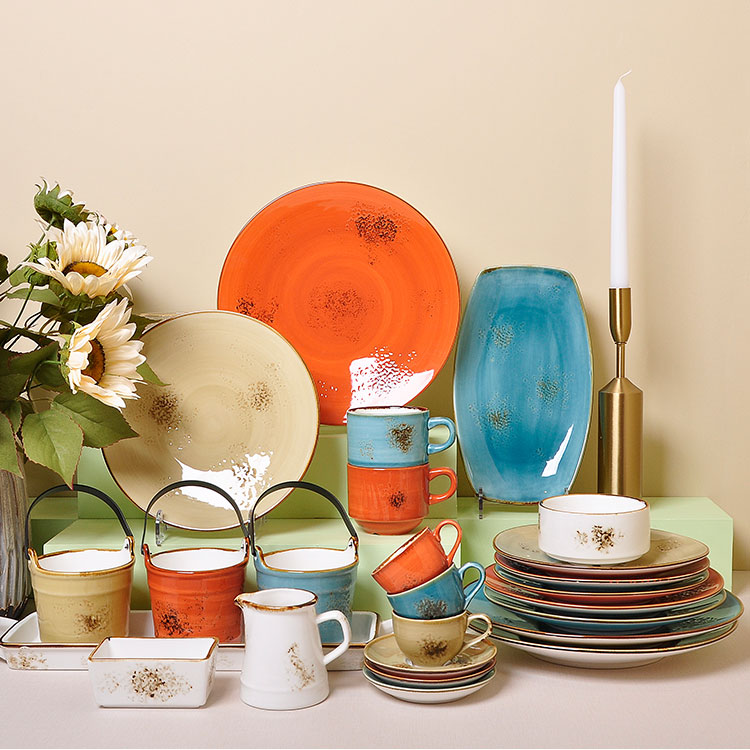
In summary, porcelain dinnerware is the perfect choice for restaurants and hotels due to its durability, versatility, and aesthetic appeal. Its resistance to chipping, scratching, and staining ensures long-lasting quality, while a wide range of designs allows for customization to suit any style. The non-porous surface preserves the taste of food, and the excellent heat retention keeps dishes at the ideal temperature. Furthermore, porcelain is practical with its stackable design and easy maintenance. So consider porcelain dinnerware for your restaurants and hotels and elevate your guests’ experience with elegance and durability!
